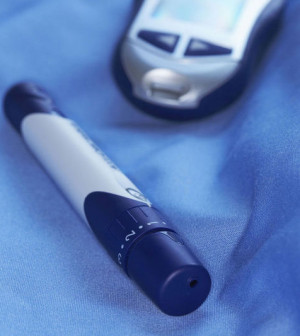- Understanding the Connection Between Anxiety and Depression
- How Daily Prunes Can Influence Cholesterol and Inflammation
- When to Take B12 for Better Absorption and Energy
- Epsom Salts: Health Benefits and Uses
- See What Saffron Can Do for Sleep and Heart Health
- 6 Common Mistakes to Avoid Before Your Physical
- Can Sweating Really Help You Beat a Cold?
- Strengthening Your Relationship: Practical Strategies
- Skip Storing This Everyday Product in the Fridge Door
- Green Tea + B3 Pairing May Boost Brain Health
More Belly Fat in First Trimester Linked to Diabetes Risk Later in Pregnancy

Women with high levels of abdominal fat in their first trimester are at increased risk for diabetes later in pregnancy, a new study suggests.
The study included nearly 500 women, aged 18 to 42, who had ultrasounds to assess their abdominal fat at 11 to 14 weeks of pregnancy. Those with higher levels of fat were more likely to develop diabetes at 24 to 28 weeks of pregnancy. But the study only showed an association, and not a cause-and-effect relationship, between belly fat and diabetes risk in pregnancy.
The study was published Nov. 2 in the journal Diabetes Care.
“This study highlights the potential to screen patients in their early stages of pregnancy, and use abdominal fat to predict the development of diabetes,” study author Leanne De Souza, from St. Michael’s Hospital in Toronto, said in a hospital news release. De Souza is research program manager at St. Michael’s and a Ph.D. candidate in obstetrics and gynecology at the University of Toronto.
“By taking pictures of abdominal fat in early pregnancy using ultrasound during routine clinical visits, we could identify women with high levels of abdominal fat who may be at risk of developing gestational diabetes later on,” she added.
Gestational diabetes is diabetes that occurs for the first time when a woman is pregnant.
Typically, doctors screen pregnant women for diabetes in the second or third trimester, looking at risk factors such as age, ethnicity, family history, blood sugar testing and overall body fat.
“The problem with those risk factors is that they don’t really tell us who’s at a high risk of diabetes,” De Souza said.
“Up to 60 percent of women will start their pregnancy overweight, many women are having children at an older age, and most people have a family member with type 2 diabetes, so traditional risk factors are starting to apply to more and more people, which prevents us from properly identifying those at a high risk,” she explained.
Previous research has also shown that between 20 percent and 50 percent of women who develop diabetes during pregnancy go on to develop type 2 diabetes within five years after their pregnancy, the study authors said.
Pregnant women at risk for gestational diabetes can take preventive measures such as adopting a healthy diet and lifestyle and avoiding too much abdominal weight gain, the researchers said.
More information
The U.S. Centers for Disease Control and Prevention has more about gestational diabetes.
Source: HealthDay
Copyright © 2026 HealthDay. All rights reserved.










